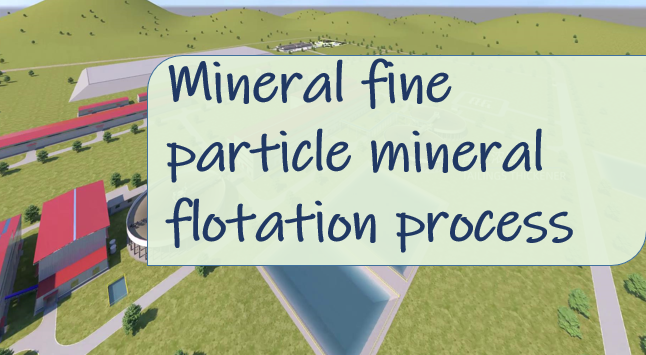Mineral fine particle mineral flotation process
2024-10-23 Xinhai (1466)
2024-10-23 Xinhai (1466)
If you have any questions, please contact us through the following ways, we will give you more and better assistance!

In view of the characteristics of fine-grained minerals, researchers have developed a variety of process technologies that can help improve the separation of fine-grained minerals, and have made significant progress in laboratory and industrial experiments.
Selective flocculation and flotation is a method of mineral separation by adsorbing flocculant molecular groups to the surface of mineral particles. Part of the flocculant molecules extends outward into the solution and attempts to adsorb on the surface of other minerals to connect the minerals, aggregate into a loose floc form, and then separate from non-target minerals.
The selective flocculation and flotation process can achieve better separation results using a relatively simple mineral processing process, and is more convenient for industrialization. However, most current flocculants are more sensitive to unavoidable metal ions (Ca2+, Mg2+, Fe2+, etc.) that are easily dissolved in water. It is sensitive and easily affected by large effects, resulting in unstable sorting indicators. It also has problems such as poor control over the dosage of chemicals.

The hydrophobic agglomeration separation process is divided into shear flocculation flotation, oil agglomeration flotation and carrier flotation technology according to the different agglomeration flotation forms. It is currently a relatively mature micro-particle tungsten flotation technology.
Shear flocculation flotation refers to a flotation method of fine-grained minerals that uses high-speed shearing and stirring to cause minerals to collide with each other to form flocs and then recover them.
Oil agglomeration flotation uses the adsorption between oil molecules and minerals to form connections between oil molecules through the shear force generated by stirring, thereby achieving the purpose of separating various minerals.
Carrier flotation technology is a method to achieve recovery by increasing the surface particle size of fine-grained minerals. Using coarse particles as carriers, the target minerals rely on inter-particle interactions under the action of collectors to carry out fine-grained minerals on coarse-grained carriers through adhesion or wrapping, thereby increasing the particle size. Sorting.
The microbubble flotation process uses microbubbles to increase the specific surface area of the foam, promote the interaction between the bubbles and the target minerals, and reduce the non-selective agglomeration behavior between fine-grained gangue minerals, thereby achieving better flotation enrichment effects. method.
Huang Guangyao and others used microbubble flotation technology to further recover tungsten resources in scheelite concentrate tailings. The grade of scheelite concentrate obtained can reach 24.52%, and the recovery rate has also reached 43.41%, achieving certain results. success.
Research shows that the use of nanobubbles with a size between 1 and 100mm can form nuclei on the surface of ultrafine particles, thereby better improving the flotation recovery rate of fine mineral particles.